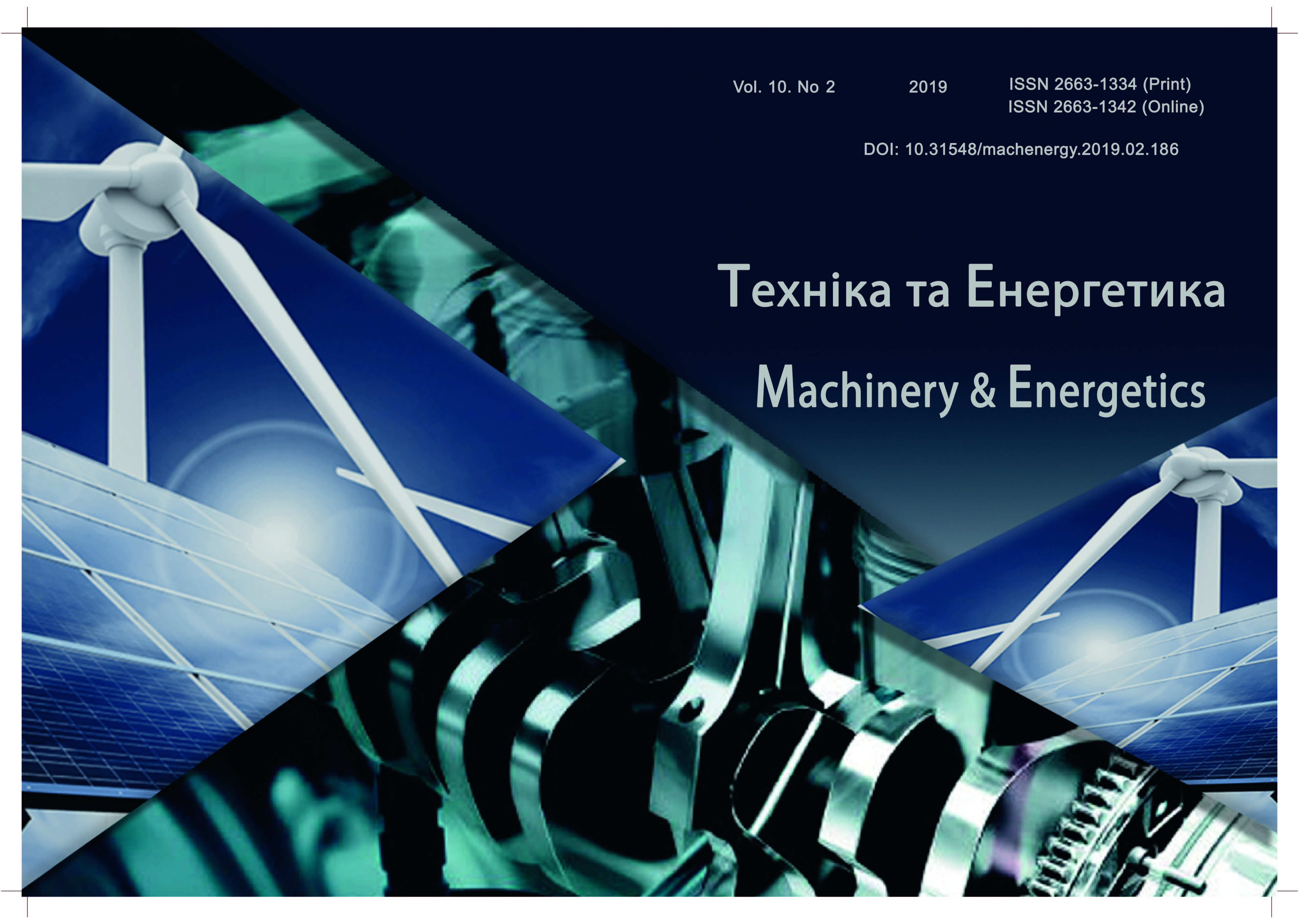Research of concrete mixture mixing system in an imitation model
DOI:
https://doi.org/10.31548/machenergy2019.02.141Keywords:
technological process, simulation model, research, concentration, concrete mix, control system.Abstract
Based on the mathematical model of the device for the production of concrete mixtures, a simulation model of the device is developed, where the influence of external disturbances on the specified technological process is investigated. A parametric diagram of the concrete mixer has been created and the parameters indicated are included in the mathematical model.
The implemented mathematical model takes into account the effects of external and internal perturbations on the process of obtaining concrete mix with specified strength parameters and a given level of solution in the mixer. The level of the solution in the mixer was adjusted by changing the cost of crushed stone, and the strength of concrete, which depends primarily on the concentration of cement in the solution, on the consumption of cement.
As a result of experimental and theoretical studies, the transfer function of the control object along the mixture concentration channel is obtained, which will allow developing process control algorithms, as well as the control system as a whole.
Acceleration characteristics of the regulatory object in terms of parameters
References
Soldatenko L. (2009). Introduction to mathematical modeling of construction and technological problems [Text]: a textbook. Orenburg: GOU OSU, 161.
Alabovsky A., Neduzhii I. A. (1990). Technical thermodynamics and heat transfer, Moscow: Higher School, 255.
Alianakh I. (1998). Modeling of Computing Systems, Leningrad, Mechanical Engineering, 223.
Kirichenko, I., Efimenko, O., Plugina, T., Kirichenko, I., Efimenko, A., Plugina, T. (2014). Computer simulation of technological process elements production of cement concrete. 2014, VNADU Bulletin, vol. 65-66, 75-78.
Yemelyanova, I., Anischenko, A. (2012). Determination of the main parameters of the technological set of equipment consisting of a gravity-forced concrete mixer and a tape-scraper feeder. Collection of scientific works [Poltava National Technical University. Y. Kondratyuk]. Ser .: Mechanical Engineering, Construction, (1), 28-34.
Singh, K. L., & Panda, D. (2019). Study on strength characteristics improvement of polyethylene modified bituminous concrete mixes. 9th International Conference on Advanced Materials Research, ICAMR 2019; Volume 803 KEM, Pages 216-221
https://doi.org/10.4028/www.scientific.net/KEM.803.216
Martintsev, V. (2013). Evaluation and analysis of designs and parameters of forced-action mixers. Construction Engineering, (31), 25-29.
Lysenko V., Bolbot I., Lendel T., Chernov I. (2014). Software and hardware for phytomonitoring system in a greenhouse, Bulletin of the Petro Vasylenko Kharkiv National Technical University of Agriculture.. Vip. 154. 42-45.
Sviridyuk, D. (2011). Analysis and evaluation of structural and technological parameters of concrete mixers. Construction Theory and Practice, (8), 11-14.
Gálvez-Moreno, D., Feys, D., & Riding, K. (2019). Characterization of air dissolution and reappearance under pressure in cement pastes by means of rheology. Frontiers in Materials, 6. https://doi.org/10.3389/fmats.2019.00073
Tazky, M., Osuska, L., & Bodnarova, L. (2019). Influence of type and composition of aggregate on mechanical parameters of concrete. Paper presented at the IOP Conference Series: Materials Science and Engineering, 549(1)
Downloads
Published
Issue
Section
License
Relationship between right holders and users shall be governed by the terms of the license Creative Commons Attribution – non-commercial – Distribution On Same Conditions 4.0 international (CC BY-NC-SA 4.0):https://creativecommons.org/licenses/by-nc-sa/4.0/deed.uk
Authors who publish with this journal agree to the following terms:
- Authors retain copyright and grant the journal right of first publication with the work simultaneously licensed under a Creative Commons Attribution License that allows others to share the work with an acknowledgement of the work's authorship and initial publication in this journal.
- Authors are able to enter into separate, additional contractual arrangements for the non-exclusive distribution of the journal's published version of the work (e.g., post it to an institutional repository or publish it in a book), with an acknowledgement of its initial publication in this journal.
- Authors are permitted and encouraged to post their work online (e.g., in institutional repositories or on their website) prior to and during the submission process, as it can lead to productive exchanges, as well as earlier and greater citation of published work (See The Effect of Open Access).

